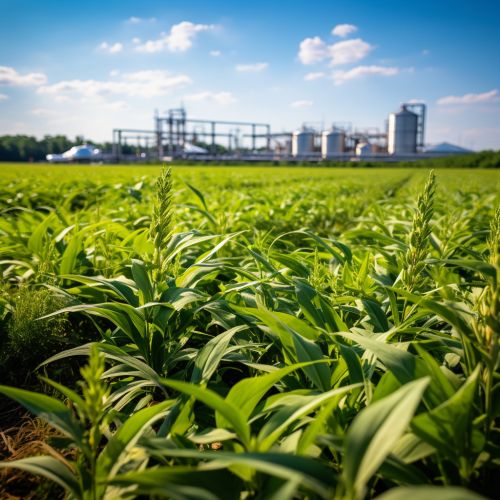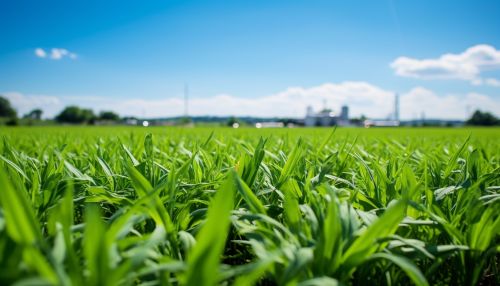Biofuels
Introduction
Biofuels are renewable energy sources derived from organic matter or waste. They are used as an alternative to non-renewable fossil fuels, such as coal, oil, and natural gas. Biofuels can be produced from a wide variety of sources, including plants, animal waste, and even microorganisms. The production and use of biofuels have significant implications for our energy future, including potential benefits for our environment and economy.


Types of Biofuels
Biofuels are typically classified into two main types: first-generation and second-generation biofuels.
First-Generation Biofuels
First-generation biofuels are made from sugar, starch, or vegetable oil. They are not considered sustainable as they are often produced from food crops, which can lead to food shortages and increased food prices. Examples of first-generation biofuels include ethanol and biodiesel.
Second-Generation Biofuels
Second-generation biofuels are produced from non-food crops or agricultural waste. They are considered more sustainable than first-generation biofuels as they do not compete with food production. Examples of second-generation biofuels include cellulosic ethanol and biodiesel from waste vegetable oil.
Production of Biofuels
The production of biofuels involves several steps, including the cultivation of biomass, the conversion of biomass into biofuel, and the distribution and use of the biofuel.
Cultivation of Biomass
The first step in the production of biofuels is the cultivation of biomass. This involves growing crops or raising animals that can be used as a source of biofuel. The type of biomass used depends on the type of biofuel being produced. For example, corn and sugarcane are often used to produce ethanol, while animal fats and waste vegetable oil are used to produce biodiesel.
Conversion of Biomass into Biofuel
The second step in the production of biofuels is the conversion of biomass into biofuel. This involves a process called fermentation, in which the biomass is broken down into its constituent parts and then reassembled into a form that can be used as fuel. The specific process used depends on the type of biofuel being produced. For example, the production of ethanol involves the fermentation of sugars, while the production of biodiesel involves the transesterification of fats and oils.
Distribution and Use of Biofuel
The final step in the production of biofuels is the distribution and use of the biofuel. This involves transporting the biofuel to where it can be used, and then using it as a fuel source. Biofuels can be used in a variety of ways, including as a fuel for vehicles, as a heating source, and as a power source for electricity generation.
Environmental Impact of Biofuels
The environmental impact of biofuels is a complex issue. On one hand, biofuels are often touted as a green alternative to fossil fuels, as they are renewable and can reduce greenhouse gas emissions. On the other hand, the production of biofuels can have significant environmental impacts, including deforestation, soil erosion, and water pollution.
Reduction of Greenhouse Gas Emissions
One of the main benefits of biofuels is their potential to reduce greenhouse gas emissions. When biofuels are burned, they release carbon dioxide, a greenhouse gas. However, this carbon dioxide was originally absorbed from the atmosphere by the plants used to produce the biofuel, creating a closed carbon cycle.
Environmental Impacts of Biofuel Production
Despite their potential benefits, the production of biofuels can have significant environmental impacts. For example, the cultivation of biomass can lead to deforestation, as land is cleared to make way for biofuel crops. This can result in the loss of biodiversity and increased carbon emissions. Additionally, the use of fertilizers and pesticides in the cultivation of biomass can lead to soil erosion and water pollution.
Economic Impact of Biofuels
The economic impact of biofuels is also a complex issue. On one hand, the production of biofuels can create jobs and stimulate local economies. On the other hand, the production of biofuels can lead to increased food prices and potential food shortages.
Job Creation and Economic Stimulation
The production of biofuels can create jobs and stimulate local economies. This is particularly true in rural areas, where the cultivation of biomass and the production of biofuels can provide employment opportunities and economic stimulation.
Increased Food Prices and Potential Food Shortages
However, the production of biofuels can also lead to increased food prices and potential food shortages. This is particularly true for first-generation biofuels, which are often produced from food crops. When these crops are used for biofuel production instead of food production, it can lead to increased food prices and potential food shortages.
Future of Biofuels
The future of biofuels is uncertain. While they offer potential benefits, such as the reduction of greenhouse gas emissions and the stimulation of local economies, they also pose significant challenges, including environmental impacts and potential food shortages. As such, the future of biofuels will likely depend on our ability to develop sustainable biofuel production methods and to balance the benefits and challenges of biofuel use.
